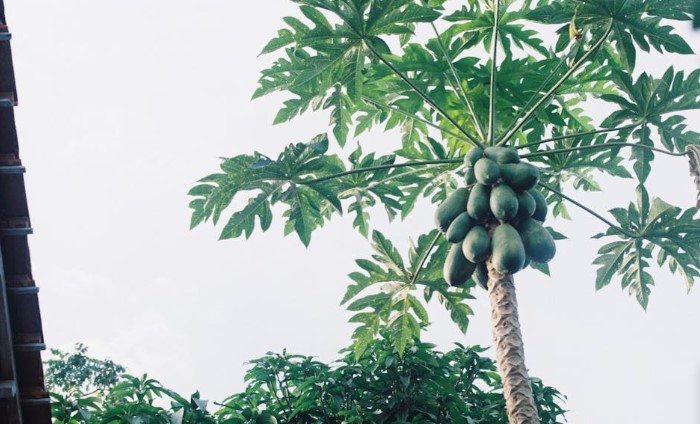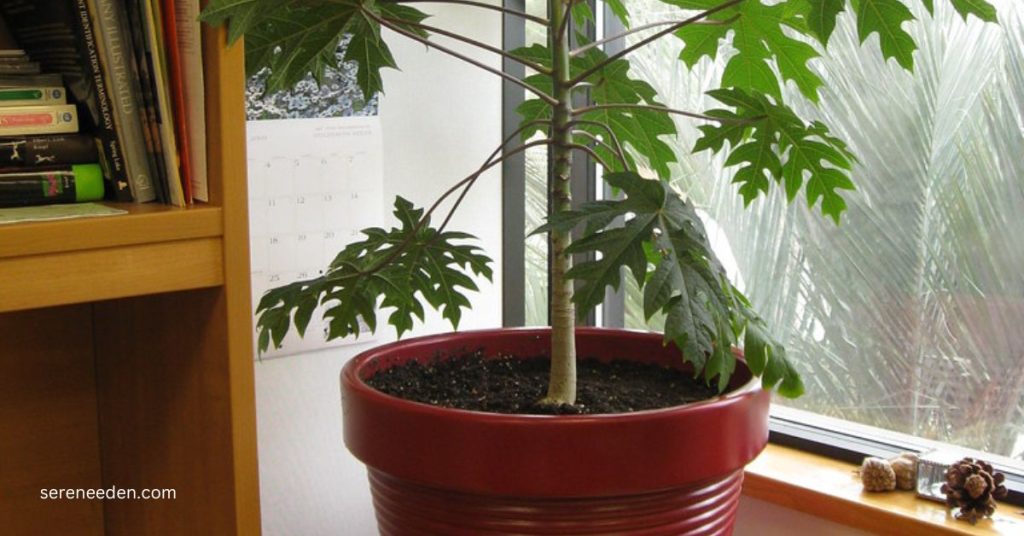Can Papaya Grow in Pots – Complete Guide to Papaya Pot Care
Can papaya grow in pots? The answer is yes! If you live in regions where the climate isn’t consistently warm or don’t have enough space, then growing papaya in pots is the best option.
However, growing papayas in pots require some special care. So, if you believe you can provide the right conditions for this tropical fruit in your home, why not?
Keep reading and learn more about growing papaya in pots and how to care for the plants.
How to Care for Potted Papaya Tree
Given the right care, you can successfully grow this delicious and nutritious plant in pots right in your home. Here are some care tips for growing papaya in pots.
Choose the Right Variety
When growing papaya in pots, it’s important to select a variety suitable for container gardening, such as dwarf varieties. These varieties have compact growth and produce medium-sized fruits.
You can consider varieties such as Waimanalo Solo and Tainung, which can thrive well in limited spaces.
Choose a Large Pot
Papaya plants have deep roots, so opt for a large and deep pot to accommodate the roots. Ensure the pot or container is at least 20-25 gallons. The pot should be deep and wide. Also, ensure the pot has drainage holes at the bottom.
Provide Adequate Light

As you know, papaya trees thrive in full sunlight for at least 6 to 8 hours daily. Place your potted papaya tree in a window that receives direct sunlight or on the rooftop or balcony.
Provide Ideal Temperature
With their tropical origins, papaya trees thrive best in warm temperatures. When growing papayas in pots, managing their temperatures is very important because they are sensitive to temperature fluctuations.
The ideal temperature for papayas is 70 to 90 degrees F (30 to 32 degrees C) during the day and above 50 degrees F (10 degrees C) at night.
During summer, ensure the temperatures don’t exceed 90 degrees C. You can mist your plant with water or move it to a shaded area.
During the winter season, move your papayas indoors and place them in a location with stable temperatures to prevent them from dropping. Alternatively, you can use glow lights or heat mats to keep the temperature above 50 degrees C.
Use Well-draining Soil
Papayas do well in well-draining soils. Too much water in the soil can cause root rot. Additionally, ensure the potting mix is rich in organic matter to provide your plant with the right nutrients.
Water Your Potted Papaya Regularly
Water is very important for the health of your plant. Papayas like moist soil but not waterlogged, so water only when the topsoil is completely dry.
Prune Regularly

Papaya trees grow very fast, so if you plant them in pots in your house or balcony, they will soon reach the ceiling. Cut the main stem (where the leaf connects to the stem) to a manageable size. This will help encourage side branching.
Additionally, remove any damaged or dead leaves to keep the plant healthy. If branches are growing too close together, thin some out to improve air circulation.
Monitor for Pests and Diseases
Although papayas are more susceptible to pests and diseases outdoors, they are still in danger indoors, although not that much. Several pests that can attack your potted papaya tree include spider mites, aphids and fungus gnats.
Root rot is a common disease that affects potted plants, but this is avoidable by simply avoiding overwatering. Other diseases include papaya ringspot virus and powdery mildew. Monitor your papaya regularly and treat any pests and diseases, if any.
Fertilize Regularly
Papayas require high nutrient levels to support their fast growth and fruiting. To support these needs, use a balanced fertilizer and apply it every two weeks during the growing season. A balanced fertilizer has equal portions of Nitrogen, phosphorus, and Potassium (10:10:10)
Final Thoughts
Even with limited space, you can still grow fresh, homegrown papayas in pots inside your house, balcony, rooftop, or patio. Remember, with the right care, you can enjoy this delicious tropical fruit at home.
Author Profile

- 🌿 Hello! I'm Mary, the nature-loving soul behind Serene Eden. Gardener, plant whisperer, compost connoisseur, sun-soaked plant enthusiast, and avid bee-watcher. Let's cultivate beauty, one bloom at a time. 🌱🌼
Latest entries
 Sustainable gardeningSeptember 2, 2024What is Sustainable Gardening?
Sustainable gardeningSeptember 2, 2024What is Sustainable Gardening? CypressAugust 7, 2024Leyland Cypress Tree – How to Grow and Care for leyland Cypress
CypressAugust 7, 2024Leyland Cypress Tree – How to Grow and Care for leyland Cypress Vegetable GardeningJuly 4, 2024Determinate Vs. Indeterminate Tomatoes
Vegetable GardeningJuly 4, 2024Determinate Vs. Indeterminate Tomatoes Vegetable GardeningJuly 3, 2024Growing Tomatoes in Pots – 9 Expert Tips for a Big Harvest
Vegetable GardeningJuly 3, 2024Growing Tomatoes in Pots – 9 Expert Tips for a Big Harvest



